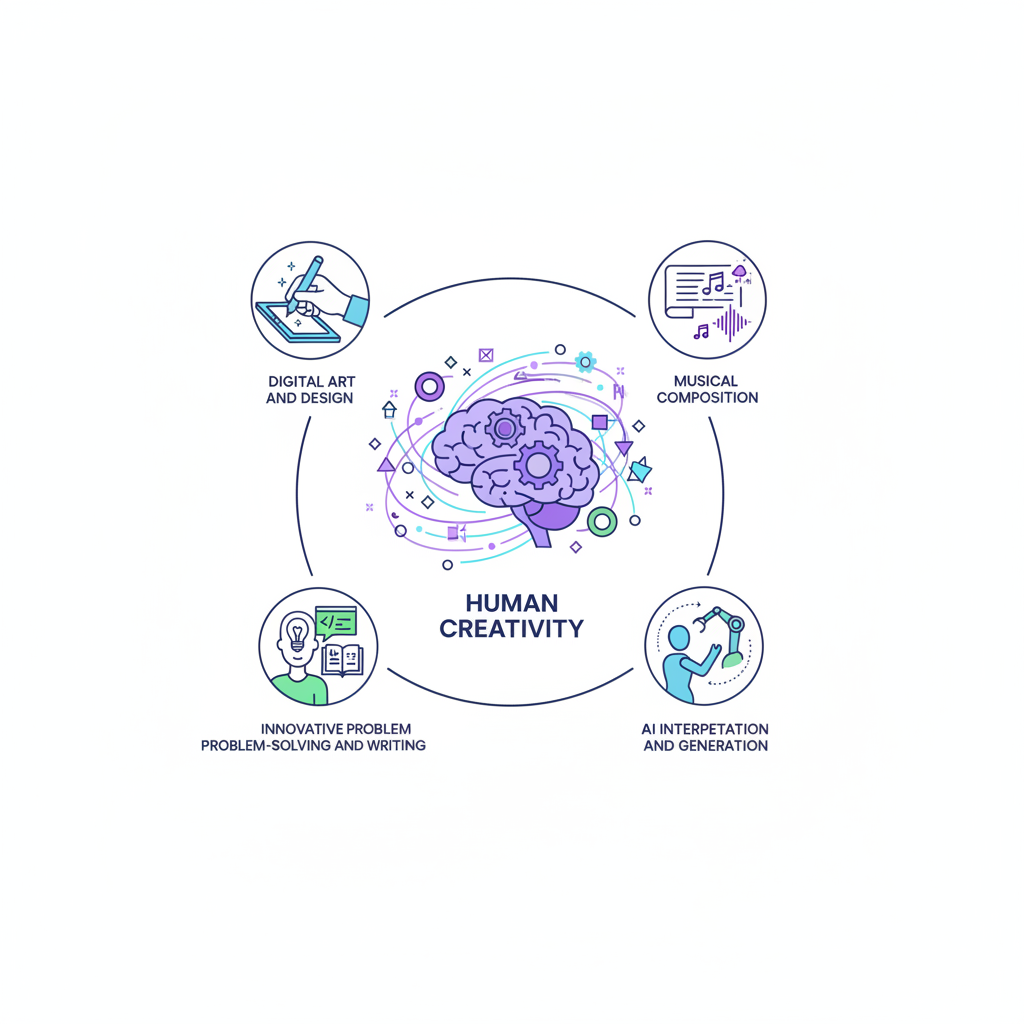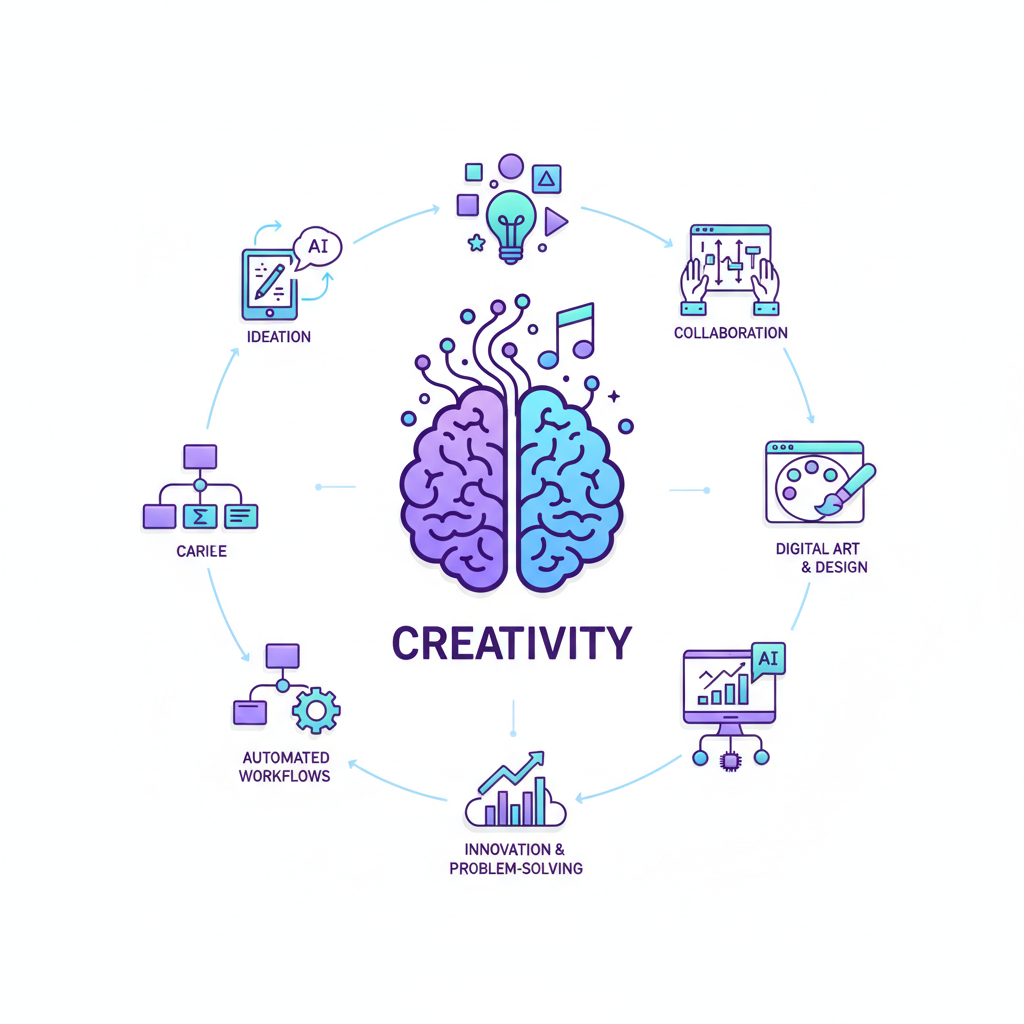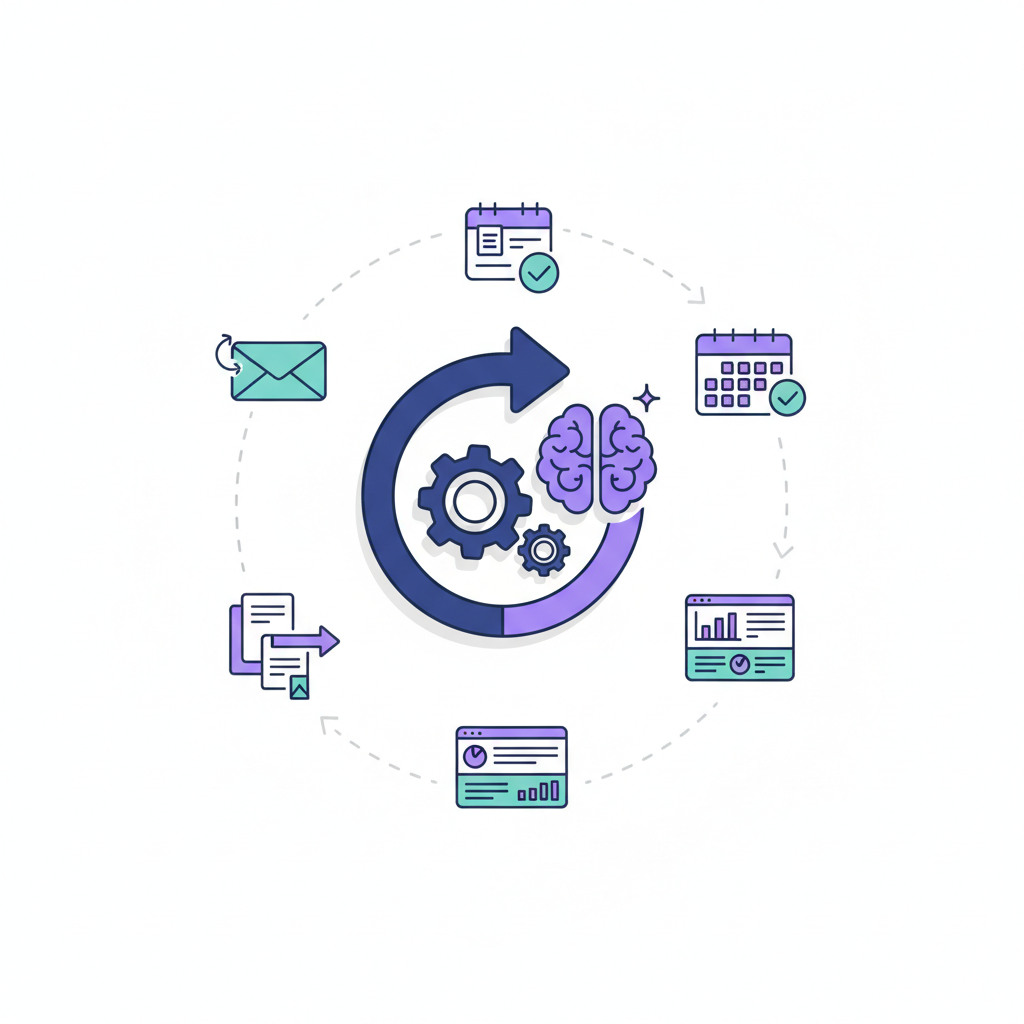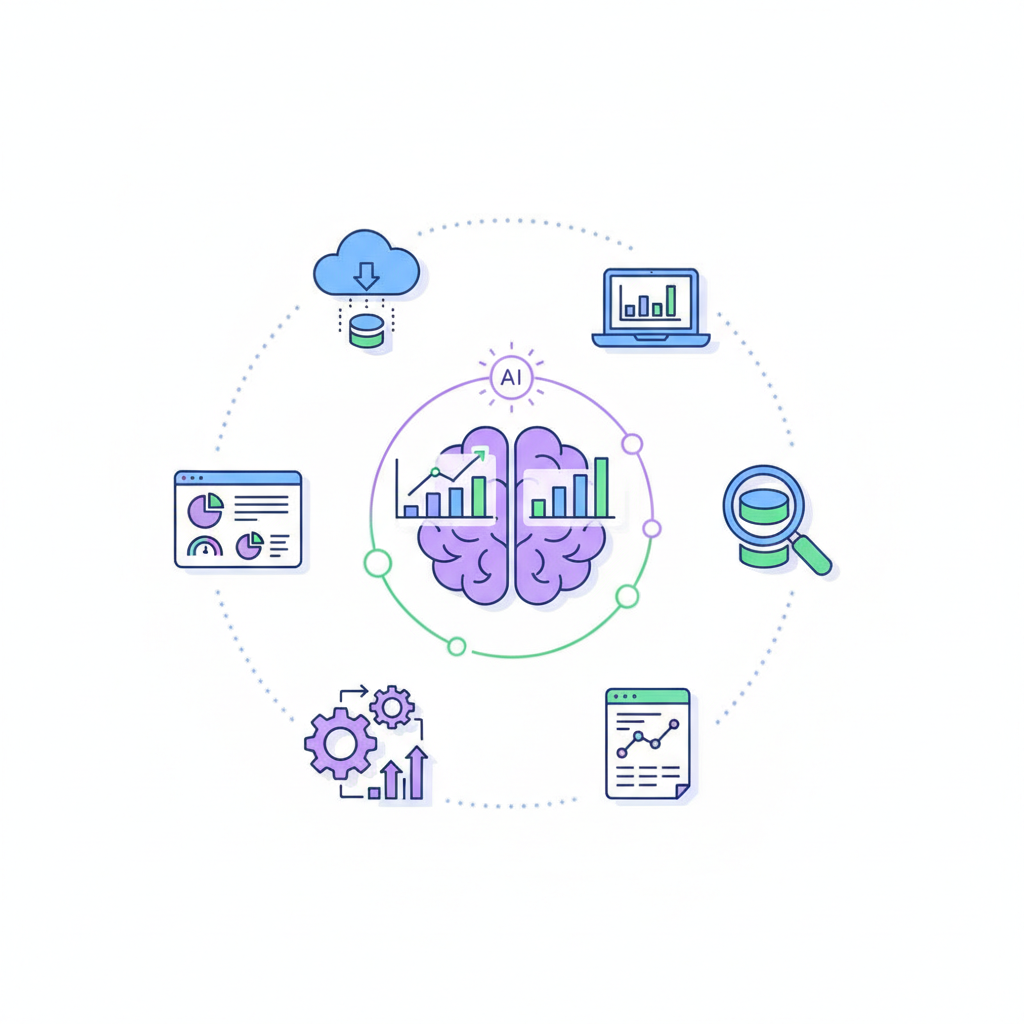Can AI Tools Truly Understand Human Creativity?
While AI tools like ChatGPT and Jasper accelerate B2B content creation and analysis, the question remains: Can they truly grasp human creativity? This guide explores how AI augments efficiency in SEO, keyword research, and content production, while confirming that human empathy and strategic vision remain indispensable for building trust and driving sustainable SaaS growth.

The digital age has ushered in an era where artificial intelligence is no longer confined to the realm of science fiction. From composing symphonies to painting digital masterpieces, writing compelling narratives, and even designing architectural blueprints, AI tools are increasingly demonstrating capabilities that, on the surface, appear remarkably creative. This surge in AI-generated content has sparked a profound and often unsettling question: Can AI tools truly understand human creativity, or are they merely sophisticated mimics, devoid of the very essence that makes human creation so unique and powerful?
To grapple with this question, we must first dissect what we mean by "human creativity" and then examine the mechanisms and limitations of AI.
Deconstructing Human Creativity: More Than Just Novelty
At its core, human creativity is often defined as the ability to produce something new and valuable. However, this definition barely scratches the surface. True human creativity is a multifaceted phenomenon, deeply intertwined with our consciousness, emotions, experiences, and our very existence.
Consider these essential facets:
- Intentionality and Purpose: Humans create with a why. Whether it's to express a profound emotion, solve a pressing problem, communicate a complex idea, challenge societal norms, or simply to find beauty, there's an underlying drive, a conscious decision to bring something into being. This purpose imbues the creation with meaning, both for the creator and the audience.
- Subjective Experience and Emotion: Our creativity is a direct outgrowth of our lived experiences – our joys, sorrows, traumas, loves, fears, and observations. A painter's brushstrokes might convey grief, a musician's melody might evoke euphoria, a writer's words might articulate existential dread. These creations are infused with the creator's subjective emotional landscape, resonating with the audience's own.
- Consciousness and Self-Awareness: Human creators are aware of themselves as creators. They reflect on their process, critique their work, and understand the impact it has. This self-awareness allows for iterative refinement, conceptual breakthroughs, and a deep connection to the act of creation itself.
- Meaning-Making and Cultural Context: Human creations are rarely isolated. They exist within a rich tapestry of cultural, historical, and social contexts. Artists draw inspiration from their heritage, challenge prevailing ideologies, or contribute to ongoing dialogues. Their work often carries layers of symbolic meaning, understood and interpreted within a shared human framework.
- Originality and Paradigm Shifts: While novelty is part of it, true human originality often involves breaking existing paradigms, forging entirely new paths, or asking questions that have never been asked. It's not just rearranging existing elements but fundamentally rethinking the rules of the game.
- Embodiment and Interaction with the World: Our physical bodies and our interaction with the material world play a crucial role. The feel of clay in a sculptor's hands, the resistance of paint on a canvas, the physical act of playing an instrument – these sensory experiences are integral to the creative process and shape the final output.
These elements combine to make human creativity a deeply personal, often messy, and profoundly meaningful endeavor. It's not just about the output; it's about the journey, the struggle, the insight, and the connection.
AI's "Creative" Prowess: A Deep Dive into Mimicry
Generative AI tools, powered by vast datasets and complex algorithms, have undeniably achieved astonishing feats in producing content that looks and sounds creative. Large Language Models (LLMs) can write poetry, scripts, and articles; image generators can conjure photorealistic scenes or abstract art; music AI can compose pieces in various styles.
How do they do it?
At their core, these AI systems operate on principles of pattern recognition, statistical correlation, and predictive modeling. They are trained on enormous datasets of existing human-created content – billions of images, texts, musical scores, and more. When given a prompt, the AI doesn't "understand" in the human sense; rather, it identifies patterns and relationships within its training data and then generates new content that statistically aligns with those patterns.
- For text generation: An LLM predicts the most probable next word or phrase based on the preceding context and its training data. It can mimic writing styles, generate coherent narratives, and even adopt specific tones because it has learned the statistical likelihood of certain word sequences and grammatical structures appearing together in various contexts.
- For image generation: Diffusion models, for instance, learn to reverse a process of adding noise to images. When prompted, they start with random noise and iteratively refine it, guided by the learned patterns from their training data, until an image matching the prompt emerges. They can combine elements, styles, and concepts in novel ways because they've seen countless examples of how these elements are represented and combined in human art.
- For music composition: AI can analyze thousands of musical pieces, identifying melodic, harmonic, and rhythmic patterns. It can then generate new compositions that adhere to these learned rules, often sounding remarkably similar to human-composed music in a given genre.
This process is incredibly powerful, allowing AI to generate novel combinations, variations, and even entirely new pieces of content at unprecedented speed and scale. It can explore vast possibility spaces that would take humans lifetimes to traverse.
The Crucial Divide: Where AI Falls Short of Understanding
Despite their impressive capabilities, a critical distinction remains: AI's "creativity" is fundamentally different from human creativity because it lacks the very foundations upon which human creativity is built.
1. Lack of Consciousness and Subjective Experience
This is perhaps the most significant barrier. AI does not possess consciousness, self-awareness, or subjective experience (qualia). It doesn't feel joy, sorrow, inspiration, or frustration. It doesn't have a personal history, a unique perspective shaped by life events, or an inner world of thoughts and emotions.
- Implication: When an AI generates a poem about heartbreak, it's not because it has experienced heartbreak. It's because it has learned the linguistic patterns and tropes associated with heartbreak from countless human-written poems. It can mimic the form and expression of emotion, but it doesn't understand the emotion itself. It cannot imbue its creation with genuine emotional depth because it has no emotions to imbue.
2. Absence of Intentionality and Purpose
AI doesn't want to create. It doesn't have desires, ambitions, or a drive for self-expression. It executes algorithms based on its programming and the data it has been fed. Its "purpose" is to fulfill a prompt, to optimize a statistical outcome, or to complete a task.
- Implication: A human artist might spend years perfecting a piece, driven by an internal compulsion to communicate a specific message or achieve a particular aesthetic vision. An AI, given the same task, will generate an output based on its learned patterns, but without any internal motivation or understanding of the why behind the creation. It doesn't care if its art moves someone, challenges a norm, or solves a problem; it simply processes.
3. The Nature of "Originality" – Remix vs. Revelation
AI can produce novel combinations of existing ideas and styles. It can generate something that has never been seen before. But is this true originality, or is it sophisticated remixing and interpolation?
- Implication: Human originality often involves a conceptual leap, a breaking of existing frameworks, or the introduction of an entirely new paradigm. It's about seeing the world differently and expressing that new vision. AI, by its very nature, is constrained by its training data. It can extrapolate and combine, but it cannot truly transcend its data in the way a human genius might. It doesn't have "aha!" moments or sudden epiphanies born from deep contemplation and lived experience. Its "novelty" is statistical, not conceptual.
4. Emotional Depth and Empathy
Human creativity often serves as a conduit for empathy, allowing us to connect with others' experiences and emotions. A powerful story can make us feel what a character feels; a poignant song can articulate our unspoken grief.
- Implication: While AI can generate content that evokes emotion in human audiences, it does so without empathy. It doesn't understand the human condition, the nuances of social interaction, or the complexities of moral dilemmas. Its creations, therefore, lack the genuine emotional resonance that comes from a creator who truly understands and feels what they are expressing.
5. Embodiment and World Interaction
Our physical existence and interaction with the world profoundly shape our creative output. The limitations and possibilities of our bodies, our sensory experiences, and our engagement with physical tools and materials are integral.
- Implication: AI exists as code and data. It doesn't experience the world through senses, doesn't feel the texture of paint, the weight of a chisel, or the vibration of a guitar string. This lack of embodiment means it misses a fundamental dimension of human creative input and expression.
AI as a Catalyst, Not a Creator (Yet): The Augmentation Model
While AI may not understand human creativity, its role in the creative process is undeniably transformative. Rather than replacing human creators, AI is emerging as a powerful tool for augmentation and collaboration.
- Overcoming Creative Blocks: AI can generate a multitude of ideas, variations, and starting points, helping artists, writers, and designers break through creative impasses. It can serve as a brainstorming partner, offering fresh perspectives based on its vast knowledge base.
- Democratizing Creativity: AI tools can lower the barrier to entry for creative pursuits. Individuals without extensive technical skills in music composition, graphic design, or writing can use AI to bring their ideas to life, fostering a new wave of citizen creators.
- Exploring Possibility Spaces: AI can rapidly generate thousands of iterations of a design, a melody, or a narrative arc, allowing human creators to explore a much wider range of possibilities than they could manually. This accelerates the experimental phase of creativity.
- Automating Tedious Tasks: AI can handle repetitive or time-consuming aspects of the creative process, such as image editing, data organization, or generating boilerplate text, freeing up human creators to focus on higher-level conceptualization and refinement.
- New Artistic Forms: The interaction between human and AI is giving rise to entirely new forms of art and expression. "AI art" itself is a genre, where the prompt, the algorithm, and the human curator all play a role in the final piece. This collaboration pushes the boundaries of what we consider art.
- Personalization and Customization: AI can tailor creative content to individual preferences, from personalized music playlists to custom-generated stories, offering highly individualized aesthetic experiences.
In this "centaur" model of creativity, humans provide the vision, the intent, the emotional depth, and the critical judgment, while AI provides the computational power, the speed, and the ability to generate vast quantities of content based on learned patterns. The human remains the conductor, even if AI plays many instruments.
The Philosophical Implications and The Road Ahead
The question of whether AI can truly understand human creativity delves into profound philosophical territory, touching upon the nature of consciousness, intelligence, and what it means to be human.
- Redefining "Understanding": If we define understanding purely as the ability to process information and produce relevant outputs, then AI certainly "understands" in a functional sense. However, if understanding implies subjective experience, consciousness, and intentionality, then AI falls short. The debate often hinges on this semantic distinction.
- The Enduring Value of Human Creativity: As AI becomes more sophisticated, it forces us to re-evaluate what we value most in human creativity. Perhaps it's not just the novelty of the output, but the story behind it, the struggle, the human touch, the emotional resonance, and the unique perspective of a conscious being. The "flaws" and imperfections of human art, often born from struggle and vulnerability, might become even more cherished.
- Ethical Considerations: The rise of AI in creative fields also brings ethical dilemmas. Questions of authorship, copyright, intellectual property, and the potential for AI to perpetuate biases present in its training data are critical. Who is responsible for AI-generated content? How do we ensure fair compensation for human artists whose work trains these models?
Looking ahead, the relationship between AI and human creativity will continue to evolve. AI will undoubtedly become more capable, generating increasingly sophisticated and seemingly original content. However, unless AI achieves genuine consciousness and subjective experience – a monumental leap that remains firmly in the realm of speculation and philosophical debate – it will likely remain a powerful tool, an incredible assistant, but not a true understander of the profound, messy, and deeply human act of creation.
The future of creativity will likely be a partnership, a dance between human intuition, emotion, and purpose, and AI's unparalleled computational power. It will challenge us to define what makes us uniquely human and to cherish those aspects of creativity that AI, for all its brilliance, cannot replicate.
Conclusion
The question "Can AI tools truly understand human creativity?" elicits a nuanced answer. In a functional, pattern-recognition sense, AI can "understand" the mechanics and styles of human creativity, allowing it to generate remarkably convincing and novel outputs. It can mimic, extrapolate, and combine with astonishing proficiency.
However, if "understanding" implies consciousness, subjective experience, intentionality, emotional depth, and the capacity for genuine meaning-making, then the answer is a resounding no. AI lacks the inner world, the lived experience, and the conscious purpose that are the wellsprings of human creativity. It doesn't feel the urge to create, nor does it comprehend the profound impact its creations might have on a human audience.
AI is not a conscious artist; it is an incredibly sophisticated algorithm. It serves as an unparalleled amplifier, a tireless collaborator, and a powerful tool that can augment human creative potential in unprecedented ways. It can help us explore new frontiers, overcome limitations, and democratize access to creative expression. But the spark of true human creativity – born from our unique consciousness, our emotions, our struggles, and our dreams – remains, for now, an exclusively human domain. The future of creativity will be defined not by AI replacing human understanding, but by how intelligently and ethically we choose to wield this powerful technology to enhance our own, uniquely human, creative spirit.
Featured Tools

10Web is an AI-powered WordPress platform that offers automated website building, hosting, and optimization with AI assistance for content and image generation.

A global creative platform connecting businesses with freelance designers for custom graphic design projects.

A1.art is an AI art generator that transforms text descriptions into unique digital artworks across various styles.

An AI platform offering customizable virtual AI girlfriends for companionship and interactive chat experiences.

Acquire.io is a customer engagement platform offering live chat, AI chatbots, co-browsing, and video chat to enhance customer support and sales.
Top AI Categories
Related Articles

How AI Tools Are Redefining Creativity in the Modern Workplace
AI tools are redefining creativity by acting as intelligent co-pilots in the modern workplace. Discover how generative AI (Midjourney, ChatGPT) automates ideation, accelerates content creation, refines code, and shifts the human role from 'maker' to 'strategist' and 'curator'.

Top 10 AI tools for Enterprise Workflow Automation
Enterprises are turning to AI-powered workflow automation to eliminate manual processes, cut costs, and accelerate strategic execution. Unlike traditional automation, AI can handle unstructured data and make intelligent decisions, offering profound benefits across finance, HR, and IT. This guide curates the top 10 AI tools—from RPA leaders like UiPath and Automation Anywhere to iPaaS solutions like Workato and low-code platforms like Microsoft Power Automate—providing a blueprint for building a more agile and resilient organization.

Top 10 AI tools for Business Analytics
In the data-driven world, AI is transforming business analytics from descriptive reporting to predictive strategy. These AI-powered tools leverage machine learning and NLP to automatically discover hidden patterns, forecast future outcomes, and allow non-technical users to query data in plain English. The top 10 platforms, including industry leaders like Microsoft Power BI and Tableau (with Einstein), and AI-native tools like ThoughtSpot and Akkio, democratize access to powerful insights. By adopting these solutions, businesses can turn overwhelming raw data into their most valuable strategic asset, accelerating decision-making and driving competitive advantage.